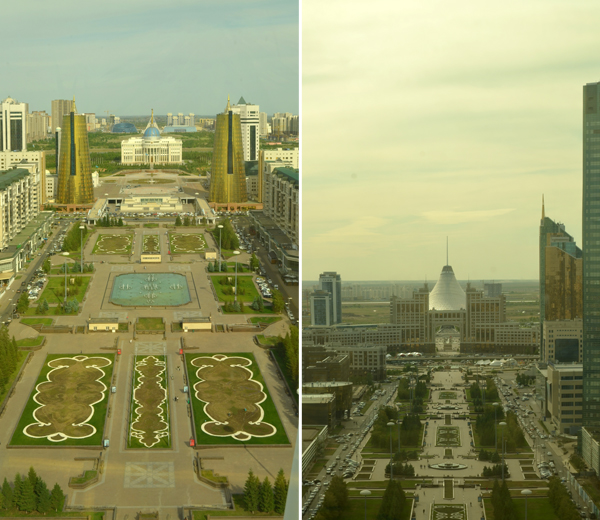
06.2016
At the western extreme of the grand axis of Nurzhol Boulevard lies Norman Foster’s Khan Shatyr shopping center, a tent of ETFE which captures solar energy to maintain the interior at a comfortable temperature during the winter. With parking and loading entries around the back, it seems unlikely that the axis can continue beyond this building. Across the Ishim at the eastern cap of the axis another of Foster’s major buildings in Astana, the Palace of Peace and Reconciliation followed by the Kasak Eli Independence Monument, and further out more undeveloped land.
Only three structures cross the axis between these anchors: the KazMunayGas Headquarters, the Bayterek Monument, and the Presidential Palace. An overlapping system of roadways and pedestrian over/underpasses links the Khan Shatyr and the plaza in front of the presidential residence. The axis is traversed on foot relatively easily from the shopping center, until the interruption of the palace and Ishim river.
Above: Views from the Bayterek Monument along the axis both East and West
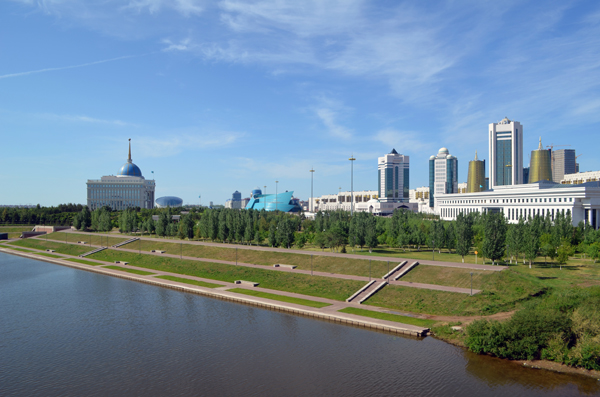
The axis is interrupted by the Ishim River
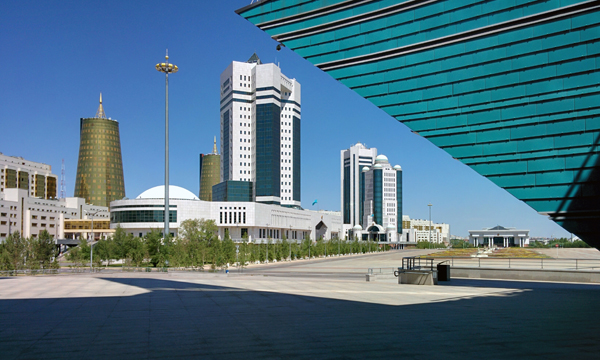
View from the Central Concert Hall. From left, the House of Ministries, the towers of the Government House, Mazhilis, and Senate, and the Supreme Court
The symbolism of the city plan is extremely powerful, with the strong central axis and the avian geometry of the park surrounding the Palace of Peace[1]. Yet, the programmatic distribution does not necessarily strengthen the hypothesis that the governmental power structure is reflected in the urban configuration (How does the shopping mall at the head of the new city, compare to the pyramid celebrating cooperation between religions?) Rather than being planned as a modernist city with separate zones of offices, government, residential and industry, many of these programs are mixed in their adjacencies along the major axis.
Yet this seemingly random organization hints that in the post-Soviet autocracy all these sectors are interrelated. The Ministry of Transport and Communications, the President’s party headquarters, and various luxury residential towers are all along this axis. The KazMunayGas serves as a gateway to the Khan Satyr, while in contrast the Supreme Court is (by local standards) a relatively modest post-modern building tucked away on the governmental plaza. The placement of each of these buildings is either a result of fortune, or a highly calculated and symbolic expression of their relative importance with respect to the center of power.
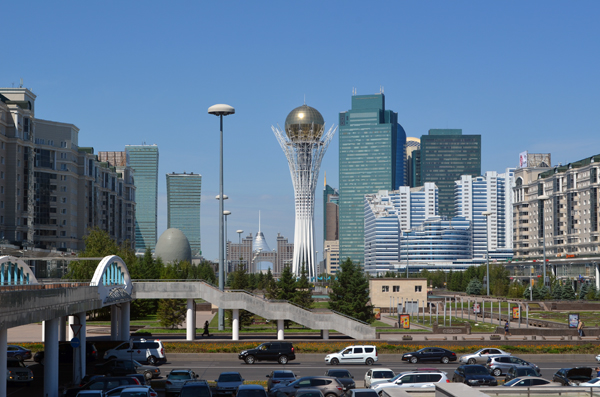
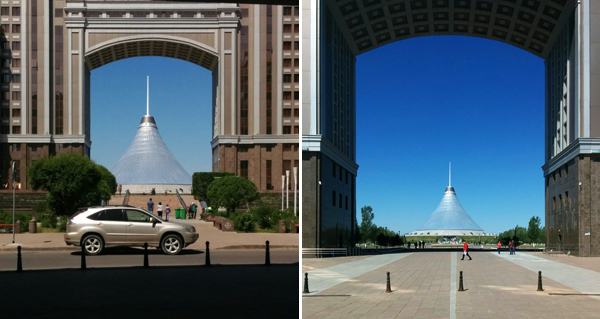
Approach towards the Khan Shatyr viewed through the KazMunayGas arch.
1. Chandigarh for example is gridded, and its major governmental buildings are grouped in a campus rather than along a major triumphal axis. In fact, Le Corbusier intended to use ground formations to obscure the view of the buildings from the main access road.